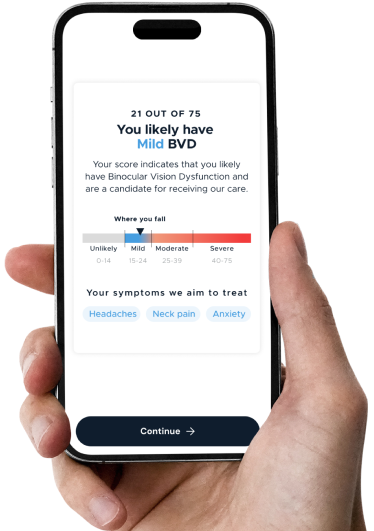Losing your place while reading can be a sign of Binocular Vision Dysfunction (BVD), a condition where eye misalignment causes blurred or double vision, making it hard to track text. This can mimic learning disorders like ADHD or dyslexia and often affects reading comprehension.
Lost Your Place Again? What You Should Know About Eye Misalignment
Do you have a problem with keeping your place while reading? Do words seem to swim on the page, run together or otherwise misbehave when you’re trying to read? Reading is such an integral part of life in general (and the learning process in particular) that when reading comprehension is an issue, life is infinitely more challenging and stressful. This is especially true for young students for whom reading and learning are a struggle. Many of these children have been diagnosed with learning disorders such as ADD/ADHD or dyslexia, when the problem may actually originate from Binocular Vision Dysfunction (BVD) brought on by a misalignment of the eyes.

How BVD Can Be Mistaken for a Learning Disability
BVD is actually quite different from ADHD, though outwardly the symptoms can look the same. People with attention deficit hyperactivity disorder, or ADHD, struggle with inattentiveness and often have difficulty reading and understanding what they read. While prescription medications can help those with ADHD improve their concentration, sometimes they seem to be ineffective. In these instances, there’s a strong likelihood that the reading and comprehension issues may actually be caused by BVD.
People with BVD have a hard time reading as well, but their difficulties are due to vision misalignment rather than an attention problem. This slight misalignment of the eyes can result in blurred, shadowed and even double vision. Patients often report that the words and letters on the page seem to shimmer or vibrate. Sometimes they even appear to move, which makes it easy to confuse BVD with dyslexia, another learning disorder that makes it seem like letters aren’t in the right order. Comprehension also becomes a problem, as one eye reads one line while the other reads the line above it, frequently resulting in skipping lines while reading. No wonder people with BVD can’t comprehend what they have just read!
With children, reading with BVD often becomes so difficult that they give up in frustration and stop paying attention. They sometimes even become hyperactive out of boredom, which is when a misdiagnosis of ADHD can occur.
Convergence Insufficiency & BVD
Like BVD, convergence insufficiency is a vision misalignment problem. This occurs when the eyes have trouble converging – coming together in order to work together. When it’s a struggle just to bring your eyes together, close-up tasks like reading become nearly impossible, and the eye muscles are greatly taxed. This results in many of the same symptoms as BVD, causing many patients who actually have BVD to be misdiagnosed with convergence insufficiency. BVD is treatable, and all it takes is the use of specialized aligning prismatic lenses. These custom lenses realign the eyes both vertically and horizontally, eliminating the strain on the eye muscles and allowing patients to see clearly, focus on the words in front of them and receive relief from their reading and learning disabilities.
Find Relief With a Pair of Special Eyeglasses
NeuroVisual Medicine specialists understand the burden felt by those with reading and learning difficulties. These specialists can help by performing a thorough NeuroVisual Evaluation to determine if a vision misalignment is present, and if necessary, prescribe special aligning lenses to treat binocular vision dysfunction and any other vision problems. Start by taking the BVDQ™ Assessment to learn if BVD is causing your symptoms.

